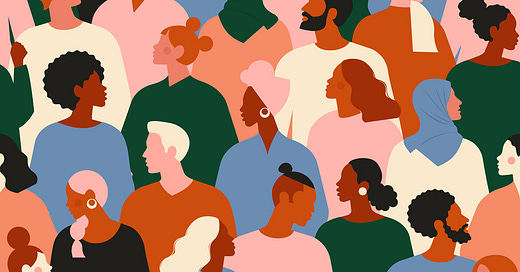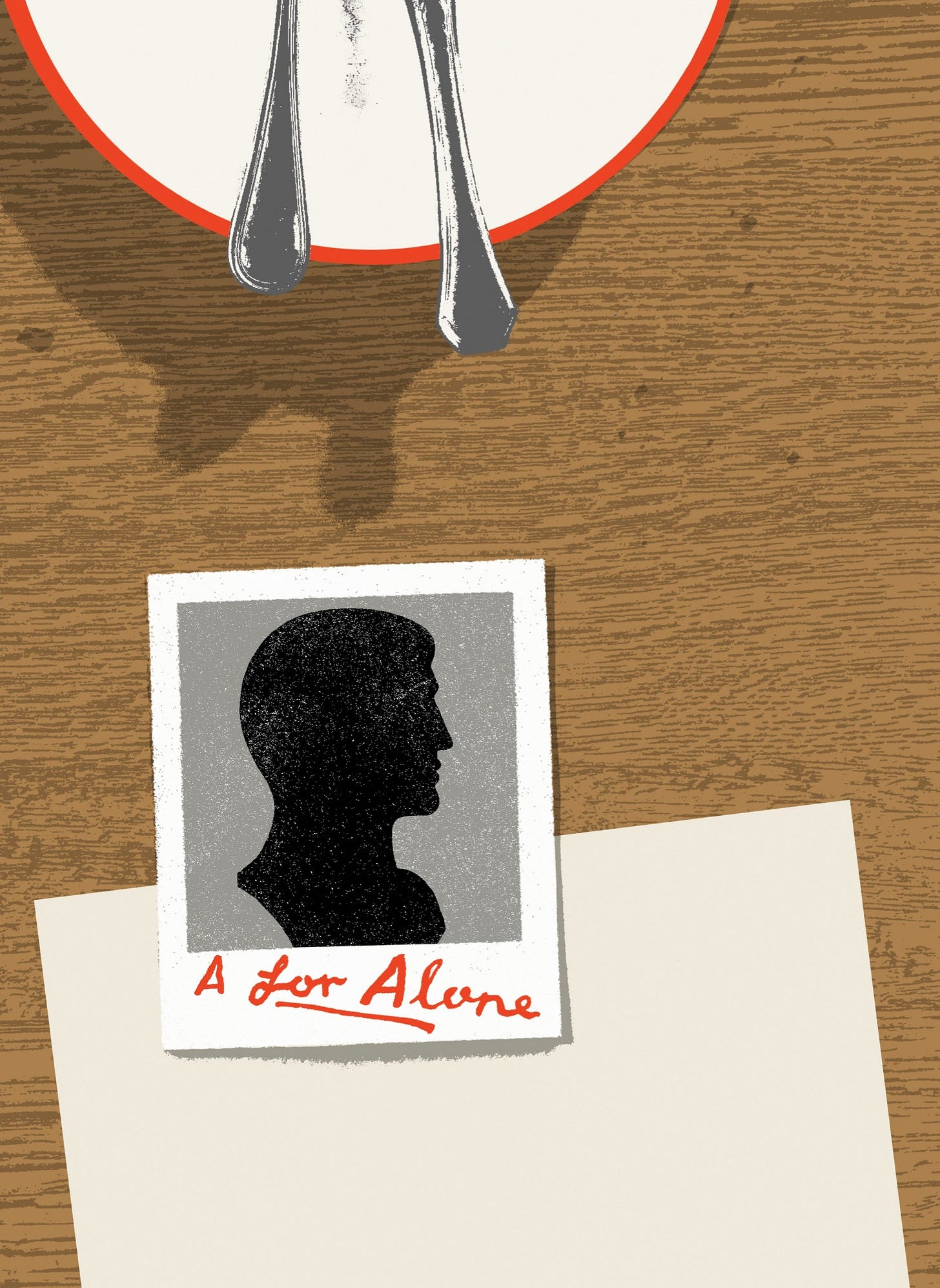Edition #76: The Power of Norms
Plus, the eternal allure of personality tests, how to be a better friend, and ASMR kitty spanks
A Note From the Editor
Have you ever heard the argument that everything is made up? It’s one of those that is so sweeping and unproductive that it’s easy to shut down, or to laugh and say “yeah, so?” In many ways, though, it is true. Sometimes when I’m walking around a quiet New York neighborhood at night, looking at these gargantuan buildings grazing the bottom of the sky, I crane my neck upward to see whether the highest floor has its lights on. I laugh because humans are strange creatures— that we’ve decided it’s acceptable to live in small corners of these towers for exorbitant amounts of money is an oddity in and of itself. If I zoom out, I can begin applying that level of absurdity to everything: that we decided living with our parents after a certain age is a sign of failure, that we wear pieces of metal wrapped around our fingers and earlobes, that we press our mouths to another to express love or lust. It’s all strange and it’s all made up. It’s only normal because we decided as such.
Even still, norms rule our lives. They have the power to shape behavior and purchasing decisions, to form habits, and to influence language. Think of Goop’s (vagina) jade egg or the word cheugy as further proof that everything is made up and even the most ridiculous things can become normalized with the right amount of scale. But norms can, and do, shape more serious matters in our daily lives, too. Beauty standards come to mind, as they are constantly changing with the trends and preferences of the decade. Once, when I was not quite sober and contemplating my reflection in the mirror, I wrote this in my notebook:
What if I could look in the mirror and see the cobwebs, crackling, parallel to the gateways of my soul, and still choose beauty? Society defines its norms; language, food, clothes, music, so is the answer a mere re-calibration of norms? Could the start of wrinkles around my eyes and mouth be considered the most beautiful thing in the world, proof of a life well lived?
In essence, I was trying to make myself feel better about the fact that I am nearing thirty and can begin to see the start of wrinkles where there once were none. But who’s to say wrinkles won’t one day be deemed trendy, as streaks of grey hair are today? In America, most of our norms are commercialized, shaped by creating a false need for a product or a surgery to “fix” something about ourselves so that we can’t be normal until we spend enough money to be. I like looking outwards to other cultures, those less influenced by capitalism, to examine their norms and contemplate where they might’ve come from, what societal values they reflect.
I recently learned about two norms that surprised and delighted me. The first, mâlama—or “to care for”—comes from Hawaii. In native Hawaiian culture, caring for the land is a norm, a tradition that has passed down for generations. Hawaiians believe in the interconnectedness of all living things, specifically between the people and the land. The relationship is synbiotic, and so caring for the land, preserving it, is the same as preserving their culture. I thought about how different this is from the American relationship with eco-consciousness, which is riddled with guilt or denial, earmarked by futile attempts to recycle while knowing we’re probably separating our plastics wrong and by trying to shop brands who claim to be eco-friendly without knowing whether there is validity to their claims. I hadn’t before realized how impersonal our relationship to the land is, how little respect and accountability we feel for it even though it houses all of us. I wondered what things might look like if we could adopt the norm of mälama. Giving back to the planet would no longer be partisan or obligatory, it would be a celebrated and normalized part of daily life.
The second norm was much more surprising—learning about hijras, India’s legally recognized third gender. In India, Nepal, Pakistan, and Bangladesh, these people, who widely consider themselves neither entirely male nor female, exist openly in societies most Westerners would think of as conservative. Hijras live in organized communities and are believed to have the power to bless or curse, so they often congregate at temples, weddings and birth ceremonies, offering blessings in exchange for money. This isn’t to say they are without the struggle, as many hijras are sex workers, but the idea that they are legally recognized as a third gender blew my mind, especially when America is falling far behind in advocating for the rights of its transgender communities.
Many of the norms we live by and accept today can be traced back to a specific turning point in our history, and learning about how our current belief system is shaped by events of the past is a fascinating exercise. I only recently learned that prior to the Reagan administration's tax reform, America was aggressive about taxing its wealthiest citizens. With that taxation came different norms: eat the rich, make them pay their fair share, etc. Today, the vernacular has shifted. I do not have a memory in my adult life of a mass of people rallying behind taxing the rich until very recently, and it’s hard for me to imagine there was ever a time where this belief was an American norm, but it was.
Where policy and shifts in political leadership can shape norms, people can also shape them. LGBTQ+ rights are a perfect example of a collective people shaping a now widely accepted norm, which was at one point nothing but a fantasy. I keep thinking about norms because they are equally arbitrary and incredibly powerful, perhaps the most powerful force for change. People only want to be loved and accepted. People want to fit in and be considered normal. But what is normal, even? It’s something we’ve made up. And, I think, something we have the power to shape.
Cheers, my dears, and thanks for reading. May you always embrace your quirks because being normal is boring, and may you also begin to inspect the norms you follow to decide whether or not they should be adhered to without a second thought.
Three Pieces of Content Worth Consuming
The Eternal Allure of Personality Tests. Send me any personality test ever created and I will take it, even those ones where you can guess how you’ll be categorized well before you click “see the results!”. This video, from one of my favorite New Yorker series called Annals of Obsession, takes a fascinating look at why people are so drawn to categorizing themselves and others via personality tests.
Are You Religious? A simple, sweet roundup of reader comments on their favorite, most beloved traditions from their respective religions—an enjoyable read whether or not you consider yourself religious. I learned about a few new religions while reading this and I could feel the warmth in the descriptions of these sacred rituals.
How to Be a Better Friend. How often have you heard someone claim they aren’t good at keeping up with people? Friends often say this to me when they notice I've maintained a handful of scattered friendships from the earlier period of my life. While there is no rule saying anyone has to stay in touch with anyone else, I've begun to loathe the disclaimer "I'm bad at keeping up with people!" as a reason for not showing up as a friend. I loved this article because it served as an important reminder that there isn't a one-size-fits-all in friendship. To be a good friend, you don't have to call every day. You have to show up for the important things, be consistent, make time.
Perhaps You Should…
Read a Stellar Short Story
When thinking about norms for today’s essay, this powerful short story came to mind. It examines the idea some people practice that straight, married people should not spend time alone with people of the opposite gender. This one stuck with me long after reading.
**Bonus Content** (AMSR Kitty Spanks)
Don’t ask me why I’ve watched this video 800 times, but I have. Also, Chloe Wise is an incredible artist worth following.
A Quote From A Book You Should Read:
“It is only that every day one grows a little, every day something is different, so that in the heaping up of days suddenly a thing that was impossible has become possible.”
-The Power by Naomi Alderman
This newsletter is best served with a side of conversation, so drop your opinions, reflections, and thoughts in the comments below and let’s get to talking.
Or, share the most thought-provoking piece from today’s edition with someone you love, then call them up to discuss, debate, and percolate. As a wise woman once said, “Great minds discuss ideas.”







